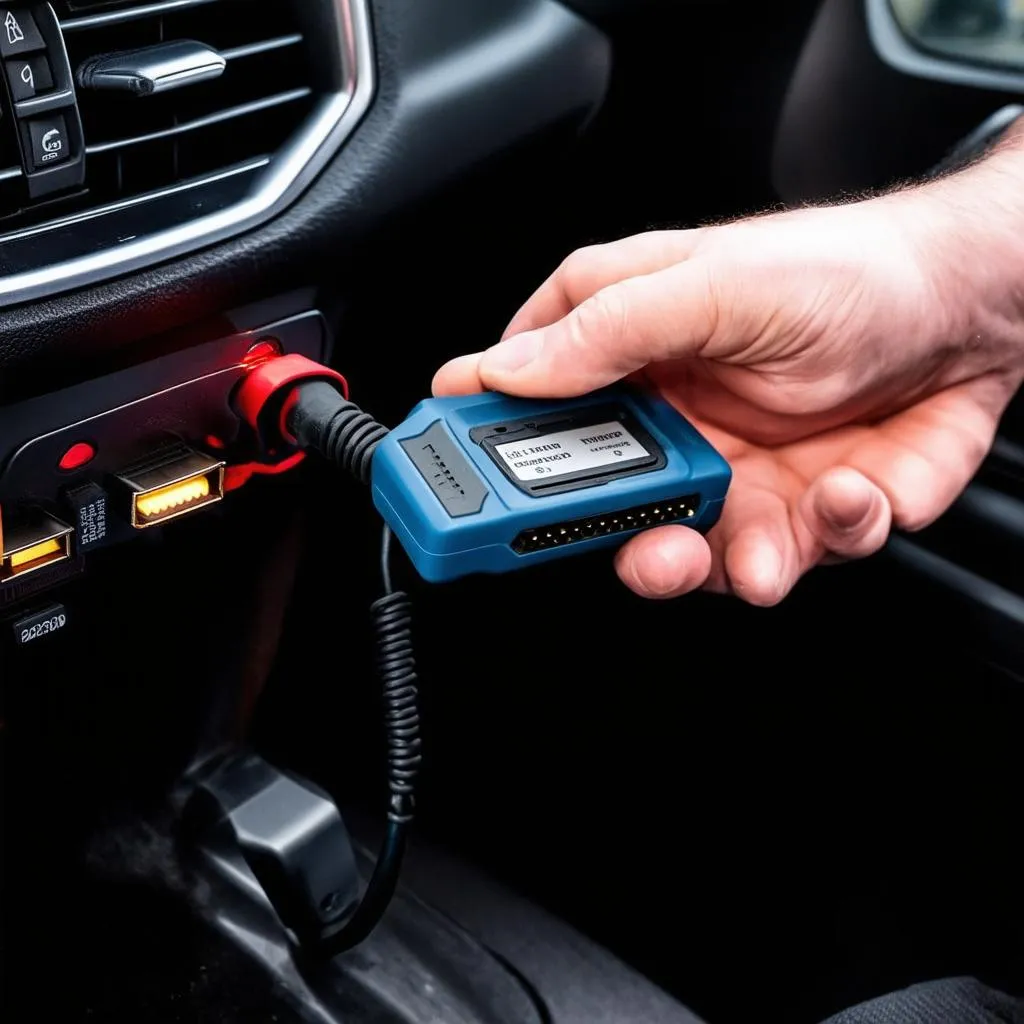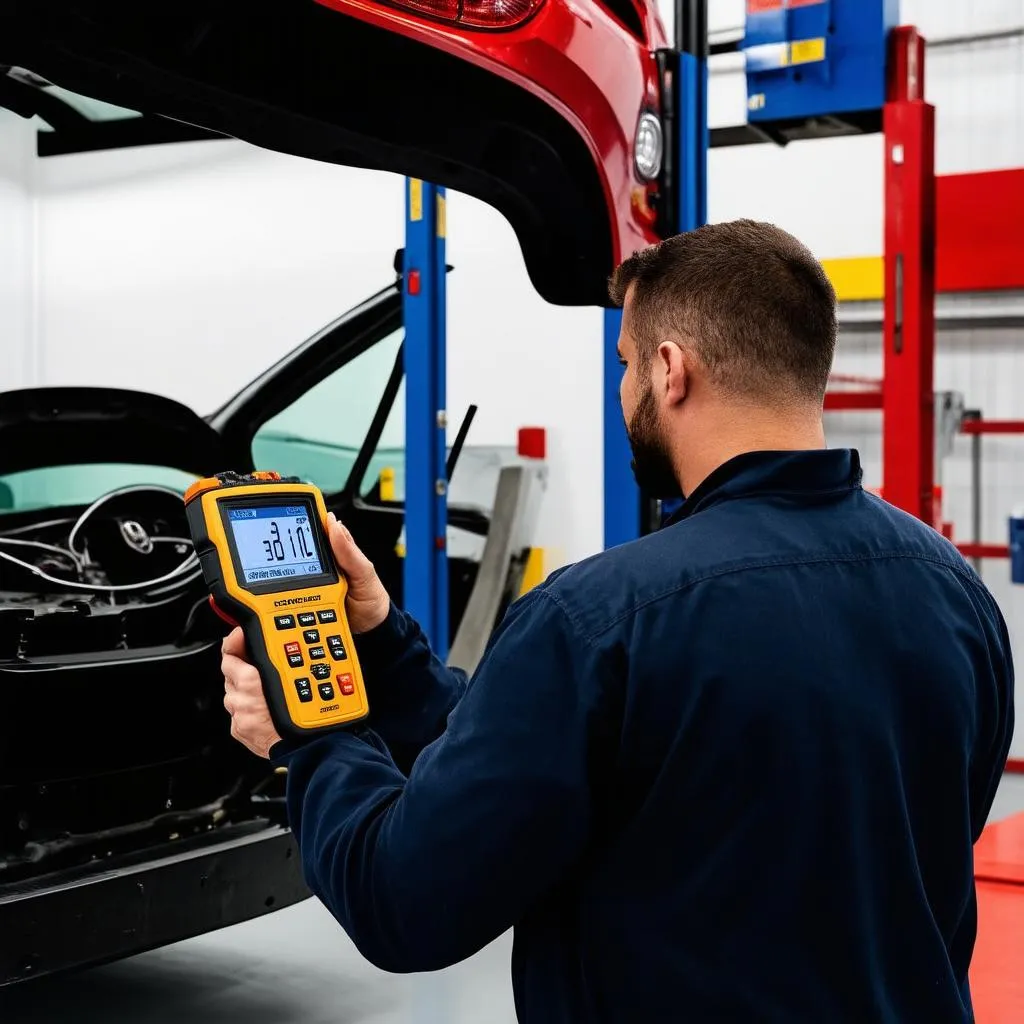Ever felt that surge of frustration when your shiny new OBD2 scanner refuses to talk to your car? You’re not alone! This is a surprisingly common issue, and luckily, it’s often an easy fix. Let’s dive into why your scanner might be acting up and how to get you back to reading those engine codes like a pro.
Understanding the Frustration: Why Won’t It Connect?
Imagine this: You’re driving down Sunset Boulevard in your 2005 Honda Accord, check engine light glaring at you. You pull into a gas station, whip out your trusty OBD2 scanner, and…nothing.
This frustrating scenario plays out for many car owners, and it can stem from a few key reasons:
- Compatibility Issues: Not all OBD2 scanners are created equal. Some scanners, especially older models, might not be compatible with your car’s specific make, model, or year. For example, European cars often require specific types of scanners. You can learn more about this in our article on Dealer Scanner For European Cars.
- Faulty Connection: Sometimes, the issue isn’t the scanner itself, but the connection. A loose or damaged OBD2 port in your car, a frayed cable on your scanner, or even a blown fuse can all be culprits.
- Software Glitches: Just like our phones and computers, OBD2 scanners can experience software hiccups. An outdated app, a corrupted file, or even a simple Bluetooth pairing issue can prevent a successful connection.
Troubleshooting Your OBD2 Scanner Connection
Before you throw in the towel (or the scanner!), here’s a step-by-step guide to get you back on track:
1. Check the Obvious:
- Is Your Car On? This might seem silly, but many scanners require the car’s ignition to be turned to the “on” position (without starting the engine) to power the OBD2 port.
- Location, Location, Location: The OBD2 port is usually located under the driver’s side dashboard, often near the steering column. Check your car’s manual if you can’t find it. For instance, you can find information on the OBD port location for a 2013 Mercedes-Benz CLS-Class in our article here.
- Secure Connection: Ensure the scanner’s cable is firmly plugged into both the scanner and your car’s OBD2 port. Wiggling the connector slightly can help ensure a solid connection.
2. Digging a Little Deeper:
- Consult the Manual: Your car and scanner manuals are your best friends. They contain a wealth of information, including compatibility details, troubleshooting tips, and fuse box diagrams. For example, the location of the OBD fuse for a 2002 Dodge Ram 1500 can be found in its manual, which we’ve also detailed here.
- Compatibility Check: Double-check that your scanner is compatible with your car’s make, model, and year. If you’re unsure, a quick Google search or a visit to the scanner manufacturer’s website can clear things up.
- Bluetooth Blues? If you’re using a Bluetooth scanner, make sure your phone’s Bluetooth is turned on and that the scanner is paired correctly. Sometimes, “forgetting” the device and re-pairing it can resolve connection issues.
3. Still No Luck?
If you’ve tried all the above and your scanner still refuses to connect, don’t panic! It’s time to call in the experts.
- Professional Help: A trusted mechanic or auto electrician can diagnose the problem quickly and efficiently. They have specialized tools and knowledge to identify any underlying issues, such as a faulty OBD2 port or wiring problems.
 OBD2 Scanner Connected to Car
OBD2 Scanner Connected to Car
Common OBD2 Scanner Connection Questions
Q: Why does my OBD2 scanner say “no link” or “cannot connect”?
A: This usually indicates a communication error between the scanner and your car’s computer. Double-check the connection, ensure your car is on, and verify compatibility.
Q: Can a bad battery prevent an OBD2 scanner from connecting?
A: While a very low battery can sometimes cause issues, it’s not usually the primary reason for scanner connection problems.
Q: Do I need a different OBD2 scanner for different cars?
A: You might! While a standard OBD2 scanner works for most vehicles, certain makes and models, particularly European cars, often require specialized scanners.
Need More Help? We’ve Got You Covered!
Getting your OBD2 scanner to connect is crucial for diagnosing and fixing car problems. We hope this guide helped you troubleshoot the issue.
Still scratching your head? Don’t hesitate to reach out! Our team of auto experts is available 24/7 to assist you with any questions or technical difficulties related to diagnostic tools and software installation. Contact us via WhatsApp at +84767531508.
 Mechanic Using Diagnostic Tool
Mechanic Using Diagnostic Tool
Explore More:
- BYLT OBD II Bluetooth Scanner Review
- Understanding OBD Error Code P0158 in a 2003 Nissan Altima SE
- Finding Your Car’s OBD Port: A Comprehensive Guide
We’re here to make your car repair journey smoother!